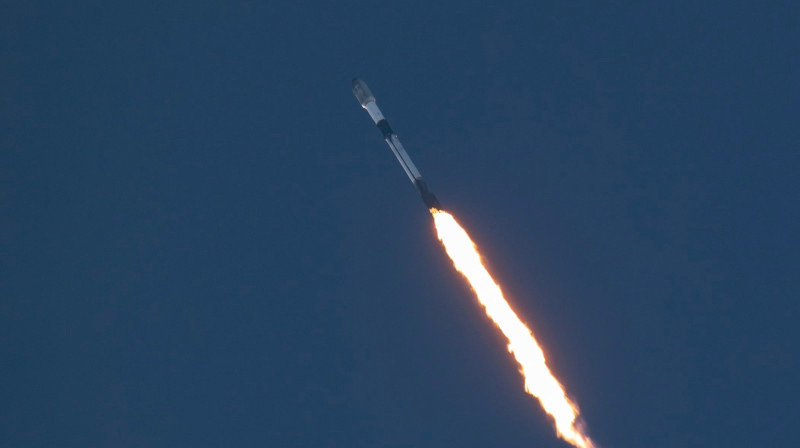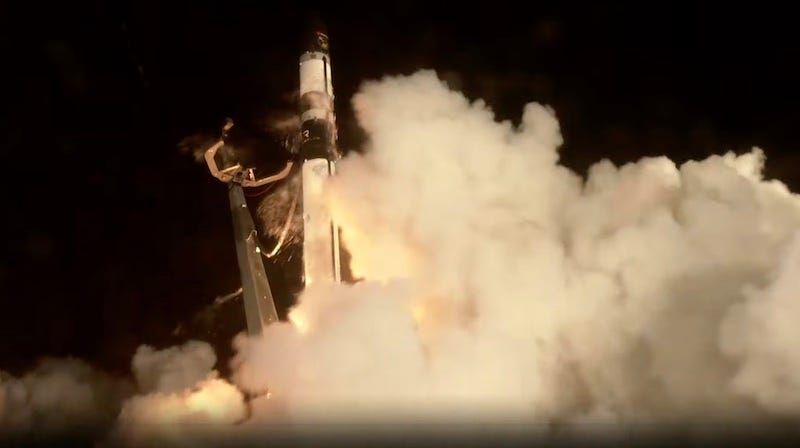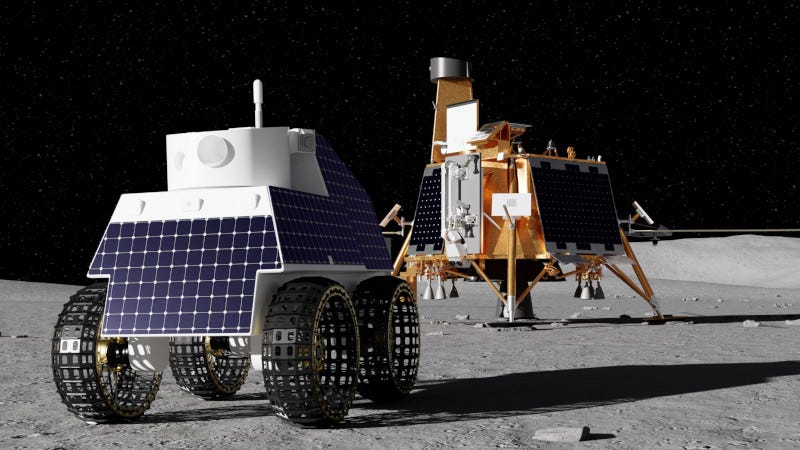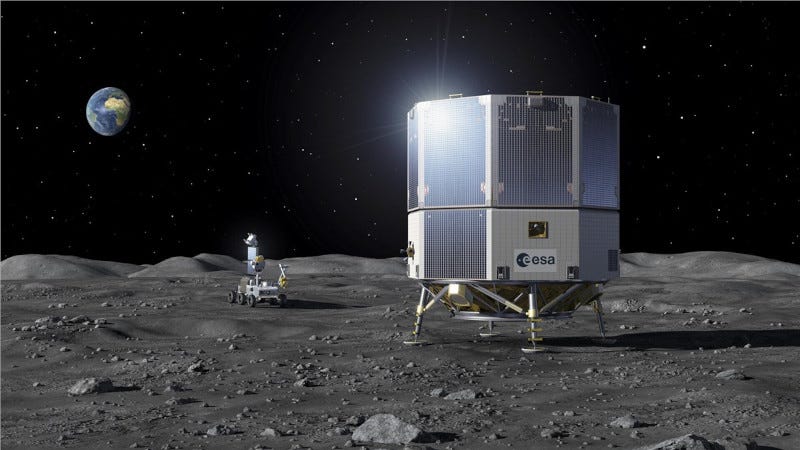SpaceX looks to increase its launch cadence from Cape Canaveral. I'm Tom Patton, and here are some of the top stories from The Journal of Space Commerce this week.
The FAA has posted for public review a Draft Environmental Assessment (EA) analyzing the SpaceX proposal to increase Falcon 9 operations from 50 to up to 120 per year from Space Launch Complex 40 at the Cape Canaveral Space Force Station in Florida. The Draft EA also reviews the construction of a first-stage booster landing zone at the site with up to 34 landings per year.
Under the Proposed Action addressed in the Draft EA, the FAA would Issue a license modification that would allow SpaceX to increase the annual number of Falcon 9 launches at SLC-40, construct and operate a Falcon 9 first-stage booster landing zone (LZ) at SLC-40, and approve related airspace closures for launch and landing operations.
The FAA invites interested parties to submit comments on the Draft EA. The comment period closes on April 24, 2025.
-0-
The Rocket Lab ‘Finding Hot Wildfires Near You’ mission lifted-off from Mahia, New Zealand on Tuesday. The mission launched within four months after contract signing with Germany-based global wildfire and detection company OroraTech in order to meet the time-sensitive requirements of the company's wildfire detection mission.
As the countdown progressed, Rocket Lab software engineer Griessen (Gray-sen) Leslie laid out the primary objectives for the launch.
"Electron is carrying eight satellites on board for today's mission for OroraTech, and is heading for a 550 kilometer circular Earth orbit on a 97 degree inclination. Deploying today's satellites on orbit will provide firefighters and emergency workers near-real-time data on how a fire is behaving, and situational awareness to better battle wildfires and their hotspots."
‘Finding Hot Wildfires Near You’ marked a significant expansion of OroraTech’s constellation, enhancing their global capabilities and connectivity with a network of advanced thermal sensors. This was the third Electron launch completed within two weeks from Launch Complex 1.
-0-
A lunar rover tasked with exploring the Gruithuisen Domes on the Moon will be built by Blue Origin company Honeybee Robotics for Firefly Aerospace. The rover will fly on the third Blue Ghost mission currently scheduled to land on the near side of the moon sometime in 2028.
As part of Firefly’s third mission to the Moon, Honeybee’s rover will help investigate the subsurface composition of the Gruithuisen Gamma Dome carrying elements of NASA’s Lunar Vulkan Imaging and Spectroscopy Explorer (Lunar-VISE) suite.
The rover will travel along the southern edge of the Gruithuisen Gamma Dome and through a boulder field to reach the rim of a recent impact crater. The rover will then traverse back to the lander just before sunset to enable repeat observations of boulder targets at different solar illumination angles.
-0-
A new statement of intent focused on Moon and Mars activities has been signed by representatives of the European Space Agency and the Japan Aerospace Exploration Agency. The statement outlines an intention towards space exploration cooperation between ESA and JAXA, and lays the groundwork for expanded collaboration between the two agencies in advancing science, technology and international partnerships.
The statement of intent highlights many opportunities for collaboration in exploring the Moon and Mars.
Going forward, technical teams from ESA and JAXA will begin working closely to define their roles and how they’ll work together; exchanging detailed data will be key to ensuring a seamless cooperation. Once these are in place, and pending further approval and funding, more formal agreements between the two agencies will be established.
-0-
The first-ever demonstration of the space-based power beaming technology being developed by Star Catcher was demonstrated last Friday, marking a major step toward deploying an in-space energy grid that will eliminate power constraints for satellites. Conducted at EverBank Stadium in Jacksonville, Florida, this end-to-end ground demonstration validates the core technology that could soon address the growing gap between supply and demand in on-orbit power generation.
For the demonstration, Star Catcher’s proprietary energy transmission system successfully collected and transmitted concentrated solar energy over 100 meters to multiple off-the-shelf satellite solar arrays, proving the viability of the company’s space technology under real-world conditions.
While this demonstration successfully beamed power the length of a football field, Star Catcher is already preparing for its first large-scale test this summer at Space Florida’s Launch and Landing Facility at Cape Canaveral, Florida.
-0-
This week on The Ex Terra Podcast, I talked with Michael Anderson, co-founder and CEO of Seagate Space.
Maritime launch has been attempted in the past, with varying levels of success. Anderson says that what his company hopes to do is provide a launch platform that it adaptable to multiple types of rockets, and offers launch providers a more affordable option than most land-based launch facilities. Anderson says their approach employs advances in technology to increase efficiency and cost-effectiveness.
"What we are designing is a platform that can be constructed modularly, and gives us an easier way to adjust the design to accomodate more than one user. And so a typical barge or vessel asset is going to be fixed-form ... there's a steel hull component and it's very hard to change the dimensions of that asset. It's hard to even go and change it on the drawing board. We've designed something that's ... I don't want to give too much away but there's incremental units to allow the assed to be constructed piecemeal. And that allows us to change the form factor, it allows us to add attributes where they're needed, versus not, and it's really unique in maritime, but I think what this industry needs is a unique solution."
Anderson says that the company has targeted a early as this year for an attempt to launch a small-scale rocket, with a test involving a full-scale launch vehicle perhaps as early as 2026.
-0-
And those are just some of the stories we covered for you this week on The Journal of Space Commerce. Whether you're a space professional or an enthousiast, please consider becoming a paid or founding subscriber and get first access to in-depth podcasts and articles focusing on the new space economy. Just visit www.exterrajsc.com to find out how you can help keep The Journal of Space Commerce independent as we chronicle, cajole, and when necessary critique the commercial space industry.
I'm Tom Patton, Thanks for listening.
-0-
You might have missed:



















